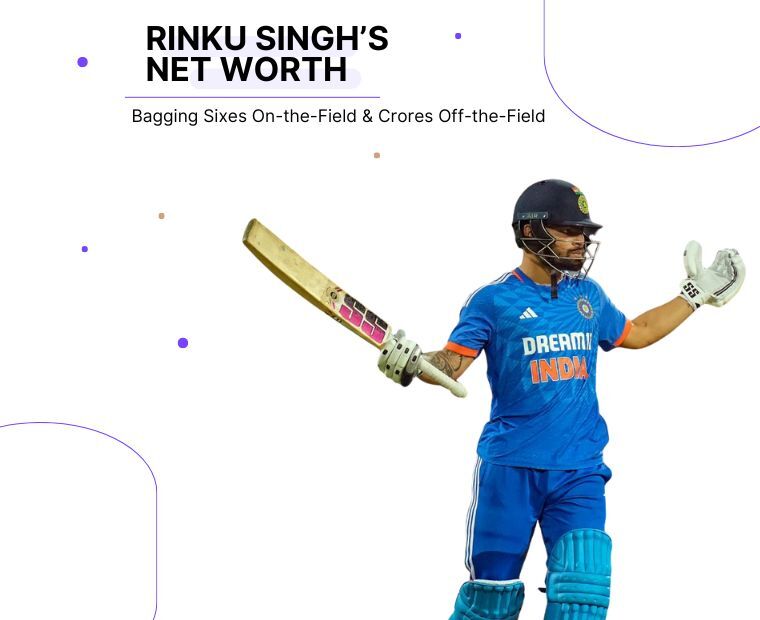Woven in Gold: The History of India's Obsession with Gold Investments


The story of India’s gold obsession is one that has been told, retold, and told again. An obsession, a treasure, and a symbol of prosperity and purity, the age-old relationship between man and metal is etched in the filigree of gold. This is the story of how Gold became an essential ingredient in almost every Indian's investment portfolio.
Part I: The Ancient Tale of Gold Obsession
In the depths of antiquity, India stood at the forefront of gold consumption. As far back as 3000 BCE, gold adorned temples, cascaded in the form of intricately crafted jewellery, and became a medium of exchange in bustling marketplaces, a symbol of prosperity.
The ancients, it seemed, knew the secret—gold was a tangible investment that stood the test of time.
However, it wasn’t until the Gupta era (circa 4th–6th century CE) that gold began to glimmer as an investment tool. Introduction of the coinage system brought ‘mohurs’ and ‘dinars’ to the forefront. And these coins weren't just pieces of gold; they were a currency of power, status, and opulence. Hoarding these golden marvels became a favourite pastime of kings, nobles, and the well-heeled.

As history sauntered on, and coinage became common-speak, the concept of gold investing underwent a transformation. During the Mughal dynasty (16th–18th century CE), gold became a financial secret weapon! By introducing ‘zabt’ through the land revenue systems, and by levying trade taxes, the empire leveraged their golden ties to Iran and the Ottoman Empire, transforming gold investment into a dazzling dance of bullion markets, mint organisations, and fiscal measures.
Part II: The World Sets the Stage for India
Fast forward to the 19th century, where the British Raj held sway over the Indian subcontinent. Gold investing took a more formal turn, making its way into the world of banking. Legacy institutions like the State Bank of India (then Imperial Bank of India), issued Gold Deposit Certificates, allowing individuals to deposit their gold with banks, ensuring both safety of the asset and value appreciation. Gold had donned a three-piece suit and walked with panache into the banking sector!

Meanwhile, there was a new player on the stage—the United States and its beguiling Gold Standards. In the late 19th and early 20th centuries, the US embraced the gold standard, pegging the value of the US dollar to a set amount of gold. And across the oceans that divided them, India couldn't help but be mesmerised by this dance of stability and confidence. The influence of the US gold standards reverberated, affecting the Indian currency and exchange rates, and igniting a spark of curiosity among Indian investors.
As gold investments became more structured, understanding its value became crucial, Gold rate calculator can assist with that.
Part III: Gold’s Tryst with India’s Destiny
Independent India’s gold had a destiny of her own. From strict restrictions to conditional transparency, the journey is one for the history books. But for the sake of simplicity, let’s divide the journey into five phases that bring us to where we stand today - at 800 tonnes of annual gold imports and as the second largest consumer of gold in the world!
Phase 1: The Golden Lockdown (1947 - 1962)
India’s tryst with gold began with strict restrictions. The Foreign Exchange Regulation Act (FERA) of 1947 played the role of a no-nonsense bouncer, tightly controlling foreign exchange and gold imports/exports. And just when things couldn't get more exciting, India bid farewell to the gold-backed "proportional reserve system" in 1956, embracing the trendy "minimum reserve system" instead.
Phase 2: The Karat Conundrum (1963 - 1989)
Just as the government was ready to throw a karat-themed party, the Gold Control Act stormed into the picture in 1968. Its mission? Taming the wild devaluation of the Indian rupee caused by excessive gold imports. Suddenly, the party had a strict bling code, limited to a 14-karat gathering.
Phase 3: Disco Ball Dreams (1990 - 1999)
Welcome to the age of liberalisation, privatisation, and globalisation, where India unleashed the golden genie from its lamp! The Gold Control Act took a backseat in 1990, opening the floodgates for free gold imports. The Non-Resident Indian scheme and Special Import License scheme in the '90s brought NRI dreams of gold back to the motherland. As if that wasn't enough, the government introduced the Gold Deposit Scheme (GDS) in 1999, allowing gold lovers and hoarders to earn interest on their beloved yellow metal. Idle gold finally found its purpose!

Phase 4: Convenience Strikes Gold! (2000 - 2010)
Convenience took centre stage in the world of gold. Banks jumped on the gold bandwagon, selling those precious gold coins by 2002. And believe it or not, your friendly neighbourhood post office became a one-stop-shop for gold coins in 2008! It seemed like gold was popping up everywhere, making convenience its middle name. But the real showstopper was the entrance of Gold Exchange Traded Funds (ETFs) in 2007, digitising gold and offering flexibility, quality assurance, and stress-free storage. Gold even weathered the storm of the 2008 global financial crisis, proving that it was the ultimate hedge against uncertainty.
And by 2010, India witnessed a gold demand explosion, reaching a staggering 1001.7 tonnes! Gold had truly struck gold!
Phase 5: The Gold Intervention (2012 - 2013)
Like any good story, there had to be a downturn. Enter the ‘intervention’. With the risk of inflation looming over their heads, higher gold import duties were levied, increasing from 2% to 10% in a span of a year! And to take care of the other downside caused by the import duties, they introduced the 80:20 rule for importers. It was a cliffhanger moment, leaving gold enthusiasts on the edge of their seats, wondering what next!

Phase 6: Golden Transparency (2014 - 2018)
Marked by a shift in the government's approach, transparency took the golden spotlight. The 80:20 rule was lifted, allowing golden prosperity to be within the reach of the masses. The triumphant return of the GDS gave gold enthusiasts a chance to earn interest on their beloved bullion. And let's not forget the launch of the Indian Gold Coin (IGC), a shining symbol of national pride that had us all exclaiming, "wah wah!"
Today, gold continues to hold a special place in the hearts and portfolios of Indians. With more goldsmiths than ATMs, and a veritable buffet of gold investment schemes, from Sovereign Gold Bonds to Futures, ETFs and fractional investments, India is poised to start her own golden export expedition. With new mines in Bihar and a revisit to gold mining in recent times, India could just be having her cake and eating it too (the cake being gold, of course)!
.svg)







.png)
.png)











.jpg)

